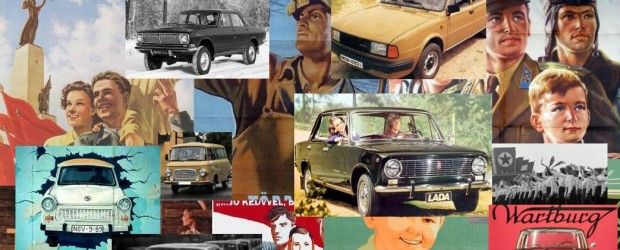Barkas was the name of a Saxon automobile manufacturer and the brand name of commercial vehicles from 1961 to 1991 produced by him, which belong to the type of vehicle the van. At times, the VEB root operation was part of the IFA-Kombinat passenger cars.

Formation
The operation goes to the Skafte by Jørgen Rasmussen back in 1923 as a supplier for its DKW factory in Frankenberg / Saxony founded Metalworks Frankenberg. The operation was moved gradually from 1933 and was named after Hainichen since 1 January 1934 FRAMO works Hainichen. Operation in 1957, the VEB Barkas-Werke Hainichen been renamed. The only type of vehicle produced by him was from Framo V 901/2) to 901 V Barkas
In 1958, the VEB Barkas-Werke Hainichen were merged with the engine work of Karl-Marx-Stadt and the vehicle work of Karl-Marx-Stadt. The operation headquarters were moved in this regard by the Karl-Marx-Stadt, the name changed to VEB Barkas-Werke Karl-Marx-Stadt. 1965, the VEB vehicle hydraulic Frankenberg has been integrated.
B 1000
From 1954 worked systematically to a completely new successor under the name "L1", because a study of the research and development work of Karl-Marx-Stadt 1951 auswies the basic concept of both types as completely obsolete. In 1956, the first functional model of the L1 is built as a panel van. 1961 began series production of the newly developed Barkas B 1000 as "light vans." He was driven by a Wartburg three-cylinder two-stroke engine with original 900 cc and a power output of 43 hp. Later, there were 1000 cc with a power output of 46 hp. The motor of the front-wheel drive was installed in the middle between the driver and passenger seat and accessible from Fahrzeuginnneren a small service cover. There were several versions, such as a box, ambulances, flatbed or van. The top speed was 100 km / h.
 minibus
|
platform truck
|
luggage truck
|
The numerous design variants such as racks, luggage, tarpaulins, minibus and made the tow vehicle very flexible in use. So there was the Barkas including as Van, police vehicle, ambulance SMH, small fire truck (KLF), flatbed trucks, semi-tractors and military vehicles. At its launch in 1961, the transporter fell by the then unusually high load-carrying capacity of one ton, in conjunction with low loading height on. Because of its simple design, it was relatively robust and reliable. There was only one standard equipment that has been continuously improved. From 1984, an LED display for fuel level and coolant temperature has been installed. The side hinged door at the closed models was replaced in June 1987 by a sliding door.
At launch, the B 1000 corresponded formally and technically quite the art. With the Western vans VW bus, Ford Transit, DKW Schnellaster, tempo or Wiking Renault Estafette he could keep up without problems. Only in the course of the years the B 1000 lost against the more developed Western European transporters connection. From the B 1000 175.740 vehicles were built.
 fire truck
|
ambulance
|
|
with pacifist and Christian painting in Belgium
|
B 1000-1
Im Herbst 1989 wurde der erste Barkas B 1000-1 vorgestellt. Er hatte wie der Wartburg 1.3 einen 58 PS starken Viertaktmotor mit 1272 cm³, der in VW-Lizenz von Barkas im Motorenwerk in Karl-Marx-Stadt produziert wurde. Ursprünglich war vorgesehen die Barkas-Transporter mit Viertaktmotor auch optisch zu überarbeiten. Mit einem großen Formteil aus Kunststoff, das die Scheinwerfer und den Kühlergrill zusammenfasste, sollte die Frontpartie modernisiert werden. Es wurden einige Prototypen gebaut. Die neue Frontgestaltung wurde jedoch nicht mehr serienwirksam. Bis zur Produktionseinstellung am 10. April 1991 wurden noch 1900 dieser Fahrzeuge gebaut.
End of the Barkas plants
By the turn of the VEB Barkas GmbH was converted to the. The THA was looking for the Barkaswerke a new owner, who was then found with Volkswagen. VW presented at the time but with the VW T3 already a similar vehicle manufacturers.
The Barkas-production was the 10th April 1991 set. The employees were very generous severance packages for the prevailing conditions. The plan was the first production model of a VW, as in the Volkswagen plant in Zwickau.
When the setting of the production, it was decided the project was the relocation of production to Russia. Of the former production manager everything was packaged, documented and provided with Russian translations. After the production of documentaries and the machinery had been brought up to date for about four million marks, everything was packed in 40 large containers. Several investors bailed out but, ultimately, no one could afford the transport costs to Russia. On 10 January 1994, the project was declared a failure. The Trust was subsequently scrapped everything. Thus ended a traditional vehicle output at the various production locations were 2,300 people unemployed.
From the Barkas work of Karl-Marx-Stadt, the Chemnitz engine plant of Volkswagen Sachsen GmbH was here 1,100 employees produce daily 3000 and 4000 engines transmissions and other drive components.





